The State of Black Chess in America
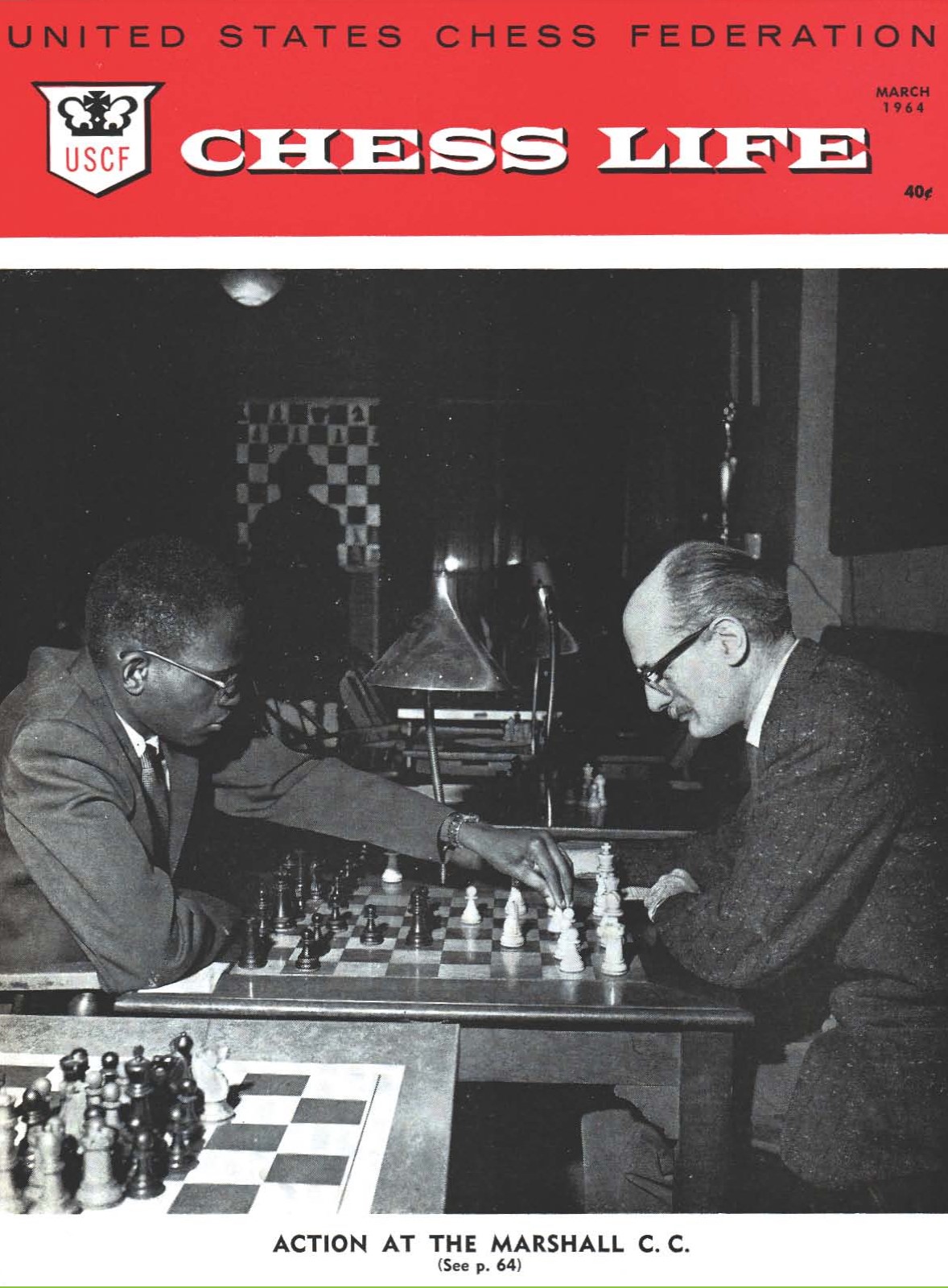
Walter Harris on the March 1964 cover of U.S. Chess Life.
In the U.S., the World Open serves not only as the marquee tournament but as the unofficial barometer for how healthy the chess environment is in the country. Approximately 1000 players trek from around the country and world to partake in a weekend of social diversion and fierce competition. It is easy to make fairly credible assessments from observing the spectacle.
Chess remains popular amongst the youth as the sport keeps getting younger. The world’s highest-rated junior at 2775 is only 19. There has been an ever-increasing trend of juniors dominating the open tournaments which may bode well for the future of U.S. chess.
For two decades, the U.S. had a dearth of players to earn Grandmaster titles, but there seems to be a sharp increase since there are more norm opportunities. Former child prodigy Hikaru Nakamura is the first American-groomed player to reach the top 10 in many years.
Furthermore, there are particularly a large number of Asians playing at the junior level. Part of the thrust is the belief among many of the immigrant parents that chess will help a child academically. There has also been an increase of Black youth playing chess through various programs such as Chess-in-Schools, but what is the current state in the Black community?
Drum Majors retiring…Rising Stars on the Horizon
In the Black community the game is getting younger, but mostly by attrition. U.S. tournaments have traditionally been the showcase of veteran talents such as GM Maurice Ashley, IM Emory Tate, IM Stephen Muhammad, FM William Morrison, FM Norman Rogers and NM Ernest Colding. (Note: GM=Grandmaster, IM=International Master, FM=FIDE Master, NM =National Master)
Unfortunately, many of the veteran players are disappearing from the tournament scene. This much was evident at the 2012 World Open, where Colding was the only master among the veteran group playing in the Open section.
Ashley recently came out of long hiatus at the Reykjavik Open in Iceland, Tate has not played since January 2012, Muhammad since December 2007 and Rogers is playing poker these days. Fortunately, Morrison still plays and will be at the 2012 Washington International in a couple of weeks.
Nigeria’s IM Oladapo Adu, IM Farai Mandizha of Zimbabwe and NM Okechukwu Iwu seem to be the most active now. It appears now that the leaders of today’s chess movement in the Black community are junior players, FM Kassa Korley and National Masters Justus Williams, Josh Colas and James Black, Jr. They are the most active and they routinely play in the top Section.
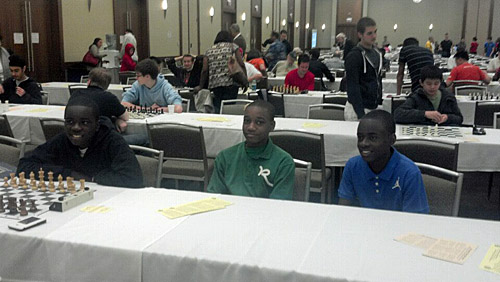
National Masters Justus Williams, James Black, Jr. and Josh Colas
Photo by Guy Colas.
What is amazing about their rise was that there was no proverbial “passing of the torch”. Of course Ashley has been a presence, but they have found their way through the support of a variety of resources. Saying that, it is a shame that these young Masters do not have a chance to see the legendary analysis sessions of Tate or to match wits with the blitz skills of Muhammad. This is important in terms of passing down valuable insight on their many years of experience.
Challenges Ahead
There was a period of about 10-15 years where only a few Blacks made National Master for the first time. This dearth was due to a number of issues (i.e., school, work, family), but some of it was due to 2100-level players getting stuck due to addiction of “fast food chess” (blitz). When asking some of the Candidate Masters, I realized there was not the discipline of inputting games into a database, annotating games and serious training. Then players like Kayin Barclay and Jimmy Canty broke through, followed by Korley’s promise in breaking Howard Daniels’ 25-year old record for youngest Black master.
I had a brief chat with Korley who mentioned that it is difficult to stay sharp in chess while a student at Duke University. While Korley stated that he loves Duke, the university does not have a vibrant chess scene. I recall that FM Matthew Hoekstra and WFM Anna Levina attended Duke in 2003-2004 and competed in the Pan-Am Intercollegiate, but those appear to have been the glory years for Blue Devils. Korley is hopeful that he can keep the momentum going, but fears that he will not have the consistency to compete for more IM norms.
As for the “Young Lions”, they are a phenomenon never before seen in the Black community. All having made National Master before their 13th birthdays, Williams, Colas and Black can be seen at tournaments matching wits with the best players. All have defeated a number of GMs and IMs and all exude a confidence beyond their years. This has to have a powerful effect on all three as they are constantly challenging and encouraging each other. From this perspective, it has been a wonderful organic development and hopefully others will follow.
Road to Master, an Elusive Goal for Black Women
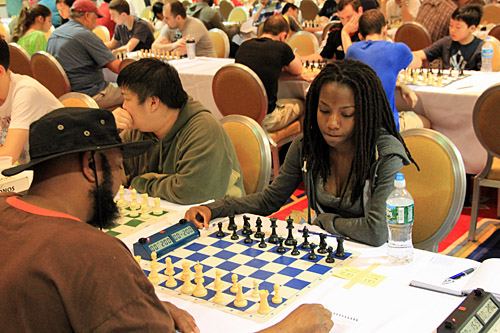
Darrian Robinson playing here at the 2012 World Open will head to University of Chicago this fall as an economics major. Photo by Daaim Shabazz.
As far as the women, there have been some successes, but the elusive National Master title remains.
- Medina Parrilla is currently not very active in tournament play, although she plays in local chess leagues and team events. At 1995 USCF, she still plays around Expert level.
- Darrian Robinson will begin at University of Chicago in the fall and is hovering close to 2100. At this point, she is trying to determine how best to get to Master level.
- Rochelle Ballantyne, a student at the academically-challenging Brooklyn Tech, has been very consistent in her play and at 2033 USCF, is trying to move away from the Expert borderline toward National Master.

Rochelle Ballantyne
Photo by Anthony Causi.
While there are bright spots, there has been no Black woman to ever earn the title of National Master. The storied history cites Baraka Shabazz as the strongest Black woman from the late-70s and early-80s. Her rise and fall is well-known. After her poor performance in the 1981 U.S. Women’s Championship, she ultimately gave up the game in frustration.
What is it about chess that remains so elusive for women? Many girls give up the game at high rates after high school although a few continue to play during university studies.
One of the most troublesome issues for girls and women is lack of accessible peers and role models in the game. Certainly training with another peer helps in a number of ways, but there are few women in the ranks. Without seeing how chess may continue to benefit them, many girls seem to re-prioritize where chess fits into their lives.
After they have used chess as a stepping-stone to get scholarships into elite universities, many seem to focus on school, careers, family and abandon the game. There is not the motivation since there are few examples of women excelling in chess at the top levels. Economics drives many of these decisions.
Norms & Titles
As far as norms and titles, Black players have more opportunities than a decade ago. IMs Tate and Muhammad took the hard way by subsisting primarily on scarce American tournaments. Tate has a handsome collection of wins over Grandmasters, but most were not in norm-earning situations. Both William Morrison and Norman Rogers have two IM norms.
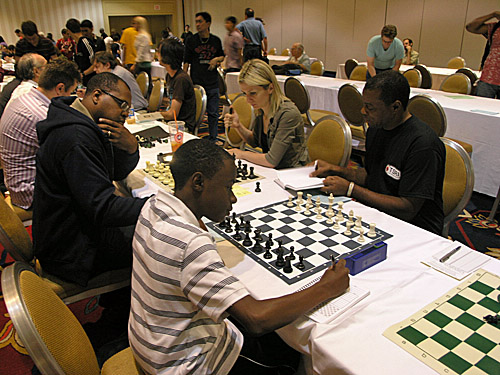
NM Josh Colas playing the legendary FM William “The Exterminator” Morrison. Colas told me he was not aware of Morrison prior to playing him. NM Lawyer Times is playing on the next board against WGM Anna Sharevich. Photo by Daaim Shabazz.
At 19, Korley already has one IM norm and the “Young Lions” will most certainly earn norms while in their teens. In addition, these players are young enough to earn titles in international events while representing national youth teams. However, their desire is to earn titles by playing the strongest competition. The future looks bright for opportunities as these young men have wide support from their families and a cadre of friends and supporters.
Issues that need to be addressed as far as creating a more vibrant standing in the Black chess community are:
- Pool of funding
- Increase in Tournament Directors
- Increase in International Arbiters
- Increase in tournament organization
- Creation of support network
For the veteran players, there is a choice of tournaments to choose from, but the issue may be expense. A tournament like the World Open may cost a player US$1000-$1200 in expenses…easily. There is no formal cost-sharing mechanisms and in a country where its top player cannot get sponsorship interest, there is little chance for a lesser master.
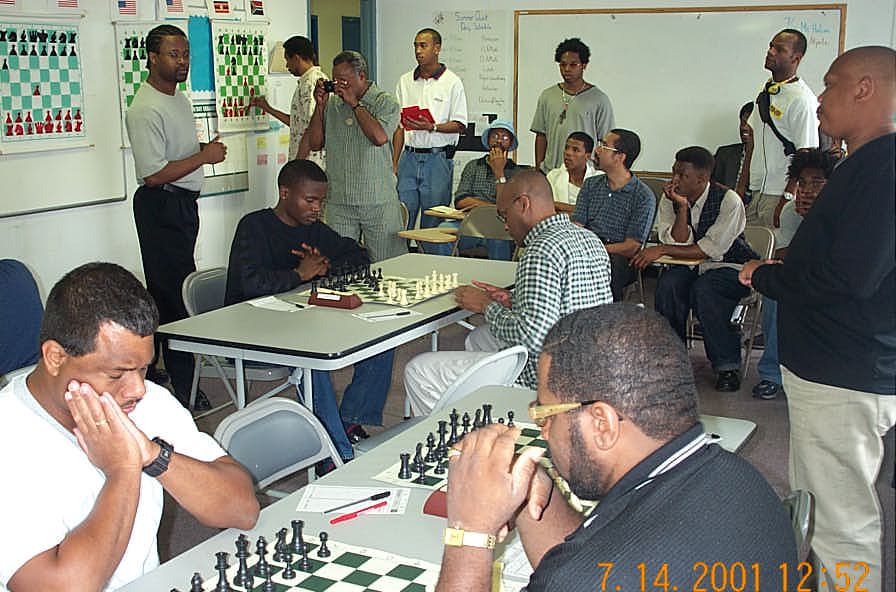
We need more Wilbert Page Memorial events!
In addition, there are not a proliferation of invitational tournaments (where some conditions are given). Thus there needs to be more organizers and arbiters in the Black community to provide additional tournaments that will help absorb some of the costs. The historic Wilbert Paige Memorial was held on a shoe string budget and done on less than a few thousand dollars.
Passing the Torch
What does this mean overall? What is the state of Black chess? The state is one of transition. As players age and retire, new ones are emerging. However how does the community prevent the droughts that are commonly seen? Veteran players have to make a concerted effort to interact with younger players a bit more. There needs to be a tradition established. It would be embarrassing for young players not to know whose shoulders they are standing on.
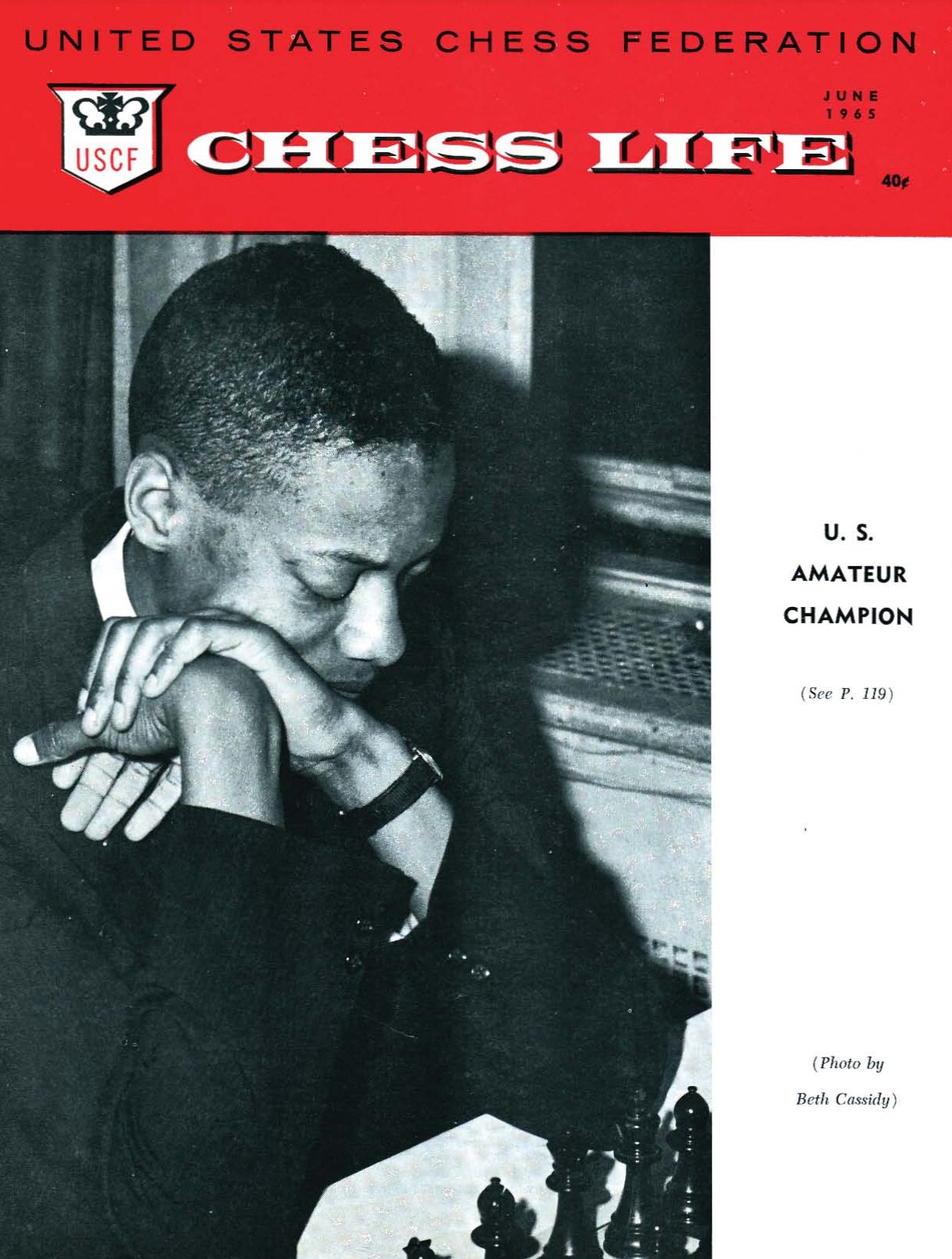
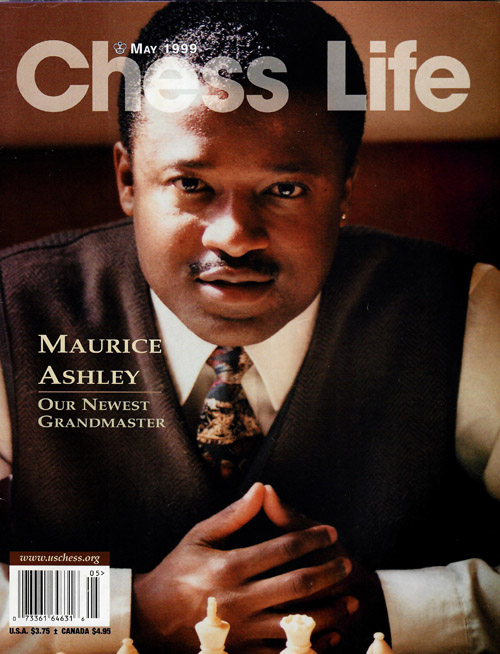
NM Frank Street on the cover of the July 1965 Chess Life for winning the U.S. Amateur. GM Maurice Ashley graced the May 1999 cover after earning his GM title.
National Master and 1965 Amateur Champion Frank Street comes to the World Open every year and it is doubtful that many of the young players know who he is. Next year, I will make a point to gather the young masters to introduce them to him. The sense of history is important and we have to begin passing the wealth of knowledge. If Maurice Ashley is the first player of African descent to make Grandmaster (in 1999), then there must be a second… and a third. Nearly 14 years later, when will this tradition start?

Well written and quite informative. Hopefully, the three young ladies will increase their hunger to become master with their love of chess break through and honor Ms. Baraka Shabazz for paving the way!
Thank you to Ms. Baraka Shabazz and all of the pioneers of chess! Hopefully there will be some African American Females achieving National Master Title in the Future!
After a recent health challenge, I realize how important my health is to my chess
Thanks for another strong contribution to chess history. I knew a lot of the story but still there were some new nuggets. Keep the beat drumming!
Daaim, with your wonderful writing skills and sharp mind, you have delivered a pinpoint accurate assessment of the state of chess in the African American community. The hidden dynamics of becoming a very strong chess player are indeed complex and for African American women, the results speak for themselves. A stable life style, good income, fierce passion, and a love for the game are a few of the attributes needed to move toward the goal of mastery. Unfortunately, it is difficult for most of us to carry on this balancing act and at some point, life’s steady jabs and sometimes vicious upper cuts have altered the paths of many of our most ardent supporters of the game. However, on a more positive note, it is sites such as “Thechessdrum” that keep our chess family in a “determined huddle” to find ways to move forward. Thank you Dr. Shabazz for all that you do for the game that we love so dearly. This is ,by far, one of the best articles that I have read about Afican American chess in a long time.
Mr. Shabazz,
I must commend you on your consistent support and promotion of African American players. I fervently follow your website, and specifically the progress of Justus Williams, Josh Colas, and James Black, as well as three young ladies – Darrian Robinson, Medina Parrilla, Rochelle Ballantyne. As the title of this article is “The State of Black Chess in America”, of which I thoroughly enjoyed the presentation, flow, and content, and mention of Maurice Ashley as the first player of African descent to make grandmaster in 1999 and understanding that Pontus Carlsson, is not American, but of Latin American and African descent, and obtained his GM status in 2007, so with all due respect…may it be fair to say, the 2nd player of African descent to make GM… which by the way I learned from a previous article from your website. Please continue your enlightening work. Without a doubt – Justus, Josh, and James, and others will be our next generation of African-American Grandmasters.
Thanks for all the kind comments. I am hoping that in the future that I will write books to show the contributions in their full glory… as permanent record. There are a number of stories that are yet to be told… and there is history still being made as we speak. We have to keep the drum beating.
Great stuff Daaim. Keep the “ink” flowing. I am proud of the “Community”, especially the “triumvirate”! In spite of the various challenges, great things are in store for the future without a shadow of a doubt.
Indeed Ian. There is some brightness ahead. Both Kassa Korley and Josh Colas have reached 2400 USCF… 2415 and 2400 respectively. What is good about the “triumvirate” is that they motivate one another and it is good to have that push.
As far as the veterans… some of them will retire, but the lack of continuity is what concerns me. There is not the proverbial passing on of wisdom that would help them avert some mistakes. I have seen this problem throughout the African Diaspora.
Interesting reference as to how speed chess ruins your ultimate long term game if you are aspiring for lofty chess heights. Speed chess is fun and addictive and it would be interesting to note how many black players have fallen to it’s snare of short term enjoyment and quick dollars at the expense of a solid USCF title.
I actually wrote an essay about it… “The Curse of the Chess Expert”
https://www.thechessdrum.net/65thSquare/65_marapr04.html